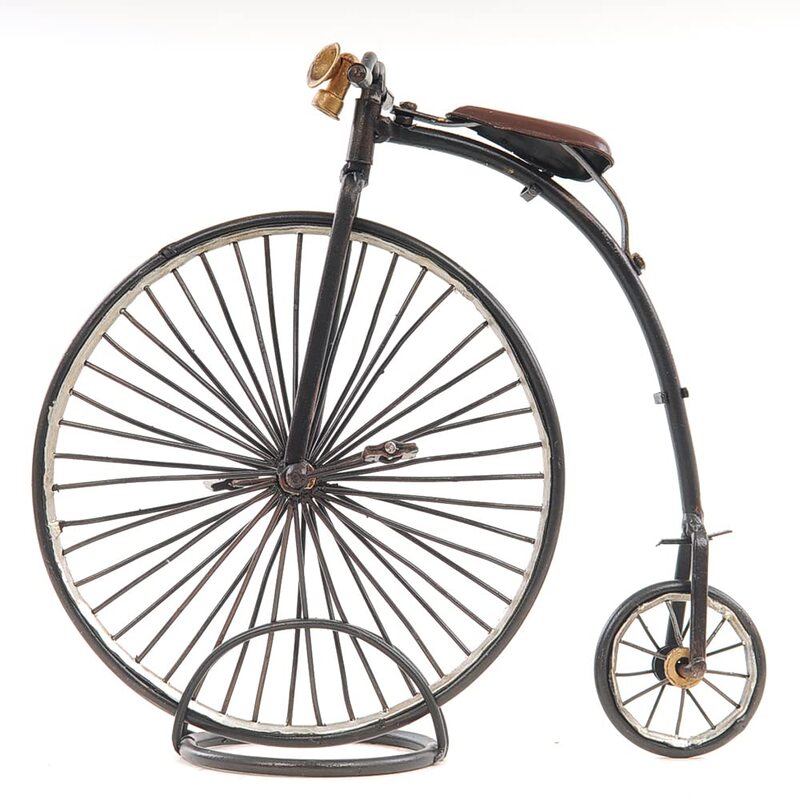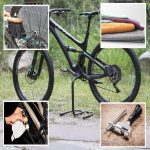Introduction to High Wheel Bicycles
High wheel bicycle, also known as penny farthings, have a unique charm. While modern bikes might dominate the streets, the nostalgic silhouette of high wheelers continues to capture the hearts of many. These bicycles stand out with their large front wheel and minuscule rear wheel, a design unlike any other seen today. Getting familiar with high wheel bicycles is the first step towards mastering them.
The History and Resurgence of High Wheelers
High wheel bicycles hail from the late 1800s. They were the first machines to be called ‘bicycles’. Yet, due to their design, riding them was not without risk. Despite the dangers, high wheel bicycles symbolized the height of fashion and modernity in their time. Over the years, they faded into obscurity but never entirely disappeared.
In recent years, there’s been a resurgence of interest in high wheel bicycles. Much of this can be attributed to enthusiasts who view riding a ‘penny farthing’ as both a hobby and a link to cycling’s history. Events, exhibitions, and clubs dedicated to high wheelers have sprung up around the world, rekindling the public’s fascination with this classic design. Whether for historical appreciation, athletic challenge, or pure enjoyment, the high wheel bicycle has made a remarkable comeback.
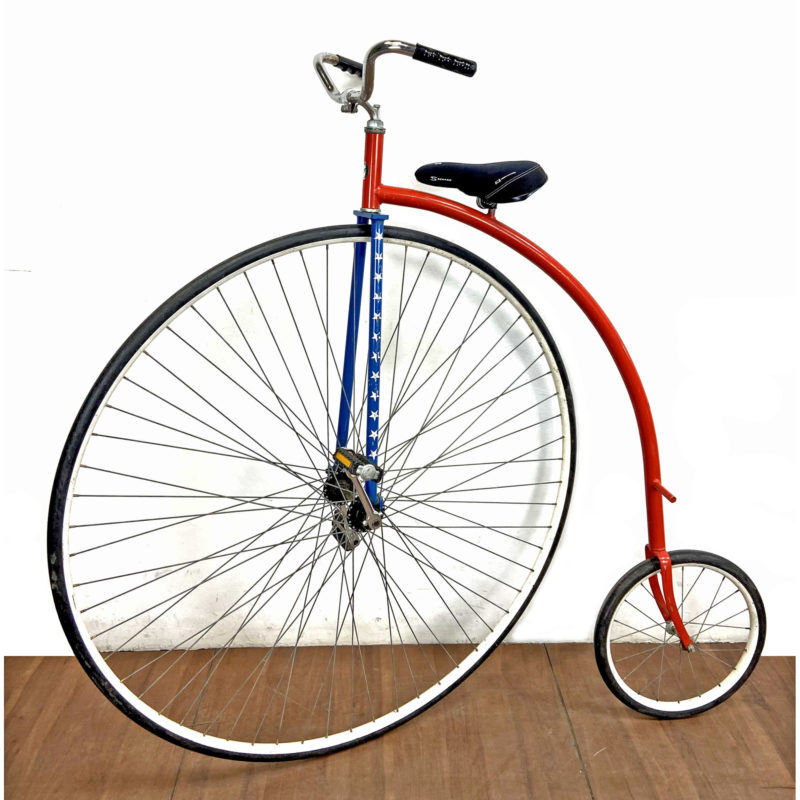
Basics of High Wheel Bicycling
To master high wheel bicycles, understanding the basics is essential. Let’s delve into the anatomy of these unique bikes and how to choose the right one for you. Both aspects are crucial for a smooth and enjoyable riding experience.
Anatomy of a High Wheel Bicycle
A high wheel bicycle comprises several key components that set it apart from modern bikes. The most noticeable feature is the large front wheel, which provides speed and dictates the bike’s overall height. The smaller rear wheel adds stability. The frame connects both wheels and supports the saddle, handlebars, and pedals. High wheelers lack gears and brakes, so users must rely on balance and leg power to control the bike.
Selecting the Right High Wheeler for You
Choosing a high wheel bicycle that suits you is vital. Consider the wheel size; larger wheels are faster but harder to mount. The height of the saddle should allow your feet to touch the ground. Look for a sturdy frame and a comfortable saddle. Ensure handlebars are within reach and that you can pedal comfortably. If you’re a beginner, it’s wise to start with a smaller wheel to practice mounting and dismounting safely.
Learning to Ride
Learning to ride a high wheel bicycle can be a thrilling and rewarding experience. However, it requires patience, practice, and the right approach to safety. In this section, we’ll cover everything from gearing up with proper safety equipment to mastering the art of balancing on these unique bikes.
Preparation and Safety Gear
Before hopping on your high wheel bicycle, it’s important to prepare yourself with the necessary safety gear. Always wear a helmet to protect your head in case of falls. Other recommended safety items include knee and elbow pads, gloves for better grip, and comfortable clothes that won’t get caught in the bike’s mechanisms. Make sure your high wheel bicycle is in good condition, with no loose parts or damaged areas.
Step-by-Step Guide to Mounting and Dismounting
Mounting and dismounting a high wheel bicycle is quite different from a regular bike due to the height and size of the front wheel. Begin by standing next to the bike and holding onto the handlebars. Step onto the peg or rear wheel, push off, and as the bike moves forward, swing your other leg over to reach the pedals. For dismounting, slow down gradually, then reverse the mounting steps carefully.
Balancing and Pedaling Techniques
Once you’re on the high wheel bicycle, balancing is key. Start by practicing at low speeds and develop a feel for the bike’s response. Keep your weight centered and look ahead, not down. Pedal smoothly and consistently, using your legs’ full range of motion. Stopping will require you to reverse pedal since high wheelers lack brakes, so fine-tuning this skill is essential for a safe riding experience.
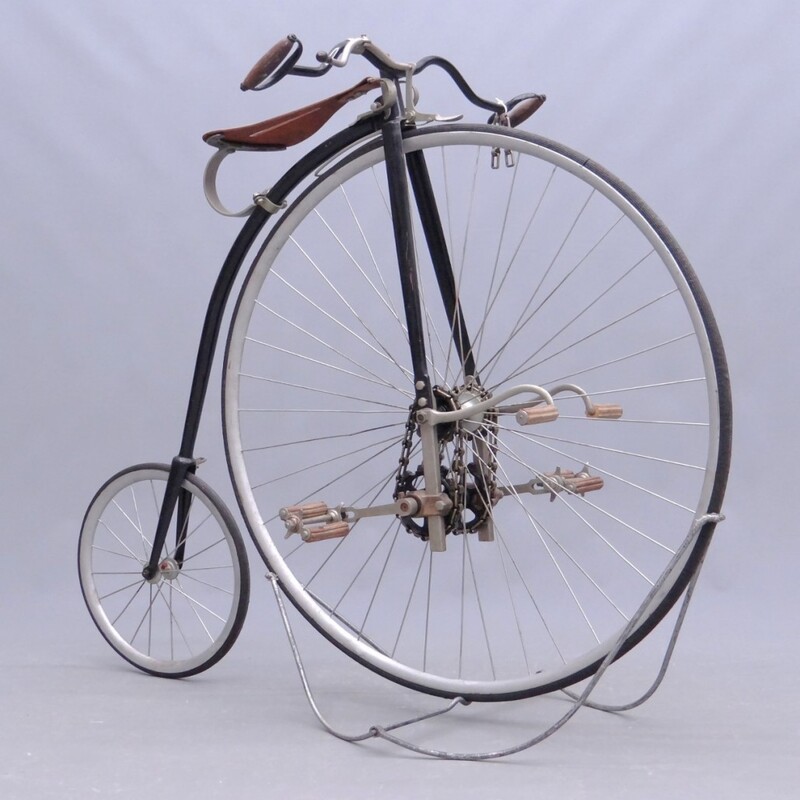
Training and Skill Improvement
Enhancing your proficiency with a high wheel bicycle takes time and dedication. Practicing regularly is the key to building confidence and skill on this unusual bike. Here’s how you can effectively improve your high wheel riding abilities.
Building Your High Wheel Riding Skills
To boost your high wheel riding skills, consistency is crucial. Start with short rides, focusing on basic techniques. As your comfort grows, extend your rides. Practice on various terrains. This will train you to manage different obstacles and improve bike handling. Work on your mounting and dismounting, as smooth transitions are vital for safe high wheeling. Set small goals each week. As you achieve them, you’ll feel more skilled and ready for new challenges.
Common Challenges and How to Overcome Them
Riding a high wheel bicycle comes with its own set of challenges. One of the biggest hurdles is balancing at high speeds. To overcome this, concentrate on core strength exercises. A strong core helps maintain stability. Another issue is maneuvering sharp turns. Take these slowly at first, and with practice, you’ll find the right balance and speed. Lastly, the lack of brakes may seem daunting. Practice stopping techniques in a controlled environment, so you’re prepared for any situation on the road. With these strategies, common high wheel cycling challenges become manageable, paving the way for a more enjoyable ride.
Maintenance and Care
Maintaining a high wheel bicycle is critical for both performance and safety. In this section, we’ll explore some essential routine maintenance tips and ways to troubleshoot common issues affecting your high wheel riding experience.
Routine Maintenance Tips for High Wheel Bicycles
Regular maintenance of your high wheel bicycle ensures a safe and enjoyable ride. Here are key areas to focus on:
- Check the Wheels: Inspect the large front and small rear wheel regularly for any signs of wear or damage. Ensure the spokes are tight and wheels are true.
- Examine the Frame: Look over the frame for stress fractures or rust. A sturdy frame is vital for the bike’s integrity.
- Test the Pedals: Make sure the pedals rotate smoothly without resistance. Lubricate the bearings if they start to feel gritty.
- Inspect the Saddle: Confirm that the saddle is secure and free of rips or loose parts that could affect comfort and control.
- Clean Regularly: Keep your high wheel bicycle clean from dirt and debris. This not only preserves its appearance but also its functionality.
Troubleshooting Common Issues
Riders may face several common issues with high wheel bicycles. Here’s how to handle them:
- Wobbly Wheels: If the wheel wobbles, check spoke tension and true the wheel. You might need a professional’s help.
- Squeaky Pedals: A squeak in the pedals often means they need lubrication. Apply bike-specific oil to resolve.
- Slipping Saddle: Tighten the bolts if the saddle slips. If it persists, the saddle fixture may need replacing.
- Rust Formation: Treat small rust spots immediately to prevent spread. Use a rust remover and apply protective coatings as needed.
By addressing these concerns, you’ll extend the life of your high wheel bicycle and enjoy many more hours of nostalgic riding. Remember, a well-maintained high wheel bicycle not only performs better but also retains its value and charm over time.
Where to Ride and High Wheeling Communities
Riding a high wheel bicycle isn’t just about learning the techniques; it’s also about experiencing the joy and community that comes with it. To fully enjoy your high wheeler, finding the right routes and connecting with fellow riders is key. Let’s explore how to find the best locations for your rides and the importance of joining high wheeling communities.
Finding the Best Routes for High Wheel Cycling
When looking for places to ride your high wheel bicycle, consider the following:
- Flat Terrain: Choose locations with flat, smooth surfaces to ease the effort required to pedal the large wheel.
- Scenic Areas: Opt for routes with beautiful views that enhance the nostalgic feel of high wheel cycling.
- Traffic Levels: Low-traffic areas are safer and more enjoyable for riding these unique bikes.
- Accessibility: Make sure the start and finish points of your route are easy to access with your bike.
- Supportive Locals: Areas where people are familiar with high wheelers will ensure a friendlier experience.
By considering these factors, you can discover the most fitting and pleasurable routes for your high wheel bicycle adventures.
Joining High Wheel Bike Groups and Events
Engaging with high wheel bike groups and events can greatly enrich your riding experience. The benefits include:
- Shared Knowledge: Seasoned riders can offer invaluable tips on handling and maintenance.
- Safety in Numbers: Riding in groups increases visibility and safety on the roads.
- Motivation: Group rides and events provide goals to work towards, which can boost your skill level.
- Community Spirit: The camaraderie and shared passion create lasting bonds and add enjoyment to the hobby.
Look for local clubs or online forums dedicated to high wheel bicycles, and consider attending national or international events to meet enthusiasts from all walks of life. Embracing the full charm of high wheeling is as much about the community as it is about the ride itself.
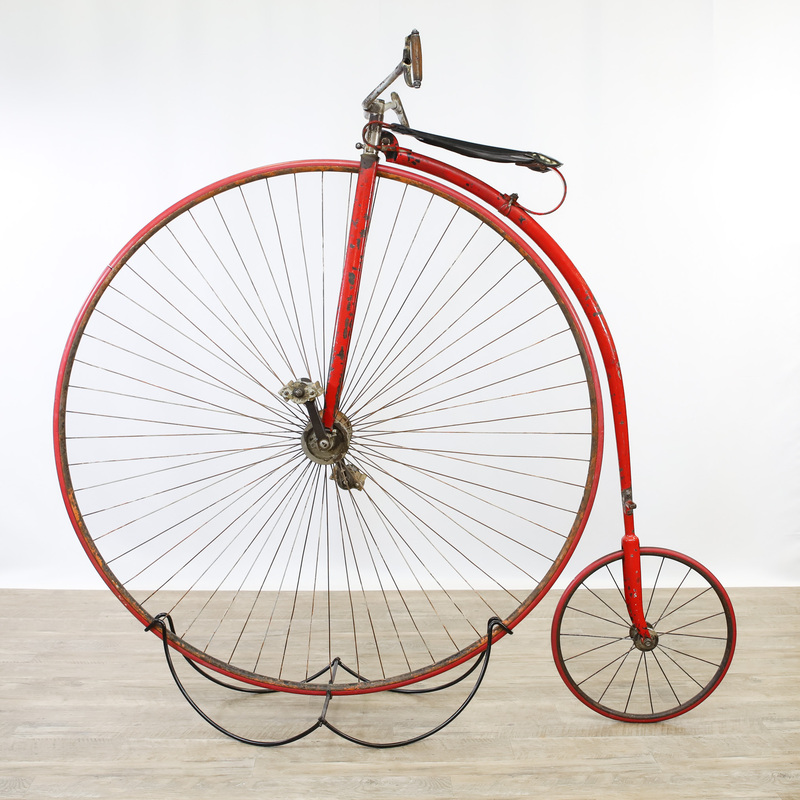
Accessories and Customizations
High wheel bicycles have their own unique style and needs. Accessorizing and customizing can enhance both the functionality and aesthetics of your ride. Let’s delve into how to gear up your high wheeler and make it truly yours.
Must-Have Accessories for Every High Wheel Rider
For a complete high wheel experience, certain accessories are essential:
- Helmets: Safety comes first; choosing a helmet that fits well is vital.
- Gloves: They provide a better grip and protect your hands during long rides.
- Comfortable Clothing: Wear clothes that avoid getting tangled in the bike’s mechanics.
- Tool Kit: Carry basic tools to handle minor repairs or adjustments on the go.
- Water Bottle Holder: Staying hydrated is important, so having easy access to water is a must.
With these must-have accessories, high wheel riders can ensure a safe and convenient journey.
Personalizing Your High Wheel Bicycle
Personal touches make your high wheel bicycle stand out and reflect your personality:
- Custom Paint Job: Choose colors or designs that speak to your personal style.
- Decorative Elements: Add vintage bells, or leather grips to enhance its antique look.
- Comfortable Saddles: Invest in a high-quality saddle for a more comfortable ride.
- Wheel Decor: Spoke decorations can add a whimsical touch to your bike’s appearance.
When you personalize, you transform your high wheel bicycle into a reflection of your unique style. Carefully select accessories that match your needs and taste to fully enjoy the high wheel bicycling experience.
Advancing to Next Levels
Once you have mastered the basics, improved your skills, and become confident in your ability to handle a high wheel bicycle, you might be interested in taking your passion to the next level. Advancing in the world of high wheel bicycling can take several exciting forms.
Participating in High Wheel Races
High wheel races are a splendid way to test your skills and enjoy the thrill of competition. If you’re eager to join in the fun, here’s what to consider:
- Training: Continue to refine your skills, focusing on speed and maneuverability.
- Equipment: Make sure your bike is in top condition and fine-tuned for racing.
- Events: Look for local races or travel to attend renowned high wheel bicycle competitions.
- Safety: Despite the competitive spirit, prioritize safety by wearing proper gear and following race rules.
High wheel races often offer a festive atmosphere, with participants dressed in vintage clothing to echo cycling’s golden era. Whether you race to win or just to participate, it’s a remarkable way to connect with other enthusiasts.
Becoming a High Wheel Bicycle Enthusiast and Collector
Taking your interest in high wheel bicycles beyond riding, you might venture into collecting and attending enthusiast events. Here’s how:
- Learn: Discover the history and significance of different high wheel models.
- Collect: Start your collection with models that appeal to you and reflect different eras.
- Preserve: Maintain and restore vintage high wheelers to keep a piece of history alive.
- Community: Join clubs and forums where collectors share information, buy, and sell bikes.
Becoming a collector not only indulges your appreciation for these bicycles but also helps to preserve an important part of cycling heritage. Engaging with the enthusiast community enriches your knowledge and makes high wheel cycling more than just a pastime—it becomes a part of your lifestyle.
